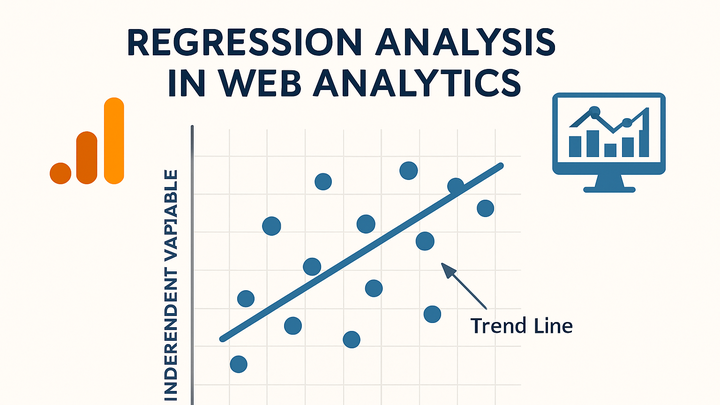Published on 2025-06-27T22:26:41Z
What is Regression in Analytics? Examples and Use Cases
Regression is a fundamental statistical method in analytics used to model and analyze the relationship between one or more independent variables (predictors) and a dependent variable (outcome). By fitting a mathematical equation to observed data, regression enables analysts to forecast future values, quantify the effect of each predictor, and identify key drivers of performance. In web and marketing analytics, regression techniques help you understand how factors like ad spend, campaign impressions, or user engagements impact metrics such as conversion rates and revenue. Common types include linear regression for continuous outcomes, logistic regression for binary events, and multivariate regression for complex scenarios with multiple predictors. These models rely on assumptions like linearity, homoscedasticity, and independence of errors, and they can be implemented in SaaS analytics tools like GA4 and PlainSignal for powerful, data-driven insights.
Regression
Regression models relationships between variables to predict outcomes, quantify influences, and uncover drivers in analytics.
Definition and Purpose
Regression is used to measure and model the relationship between dependent and independent variables, enabling prediction and insight into key factors driving outcomes.
-
Core concepts
At its core, regression fits a curve—often a straight line in simple cases—to observed data to approximate the relationship between variables.
-
Dependent variable
The outcome you want to predict or explain (e.g., conversion rate).
-
Independent variables
Factors that influence the outcome (e.g., ad spend, user sessions).
-
Types of Regression
Analytics leverages various regression models tailored to different prediction tasks and data types.
-
Linear regression
Models a continuous outcome as a linear combination of predictors.
-
Logistic regression
Estimates the probability of a binary outcome, such as a user converting or not.
-
Multivariate regression
Handles multiple predictors to capture complex relationships.
Assumptions and Best Practices
Effective regression analysis depends on meeting key assumptions and following best practices to ensure valid, reliable results.
-
Key assumptions
Regression models rely on statistical conditions that must be checked before drawing conclusions.
-
Linearity
The relationship between predictors and the outcome is approximately linear.
-
Homoscedasticity
Residual errors have constant variance across all levels of the predictors.
-
Independence
Observations and their errors are independent of one another.
-
Normality
Residuals (error terms) are approximately normally distributed.
-
No multicollinearity
Predictors are not highly correlated with each other.
-
-
Best practices
Enhance model performance and interpretability through proper data preparation and validation.
-
Feature engineering
Select, transform, or create variables to improve predictive power.
-
Cross-validation
Use techniques like k-fold cross-validation to assess model generalizability.
-
Implementing Regression in SaaS Analytics Tools
SaaS analytics platforms like GA4 and PlainSignal provide features or integrations to perform regression analysis on your data.
-
GA4 regression analysis
Use GA4’s Explorations and BigQuery export to build custom regression models and visualize relationships in your data.
-
PlainSignal example
Insert PlainSignal’s cookie-free tracking code on your site to collect data, then export and analyze it in your preferred regression tool.
<link rel="preconnect" href="//eu.plainsignal.com/" crossorigin /> <script defer data-do="yourwebsitedomain.com" data-id="0GQV1xmtzQQ" data-api="//eu.plainsignal.com" src="//cdn.plainsignal.com/plainsignal-min.js"></script>
Real-World Example
A practical scenario demonstrating regression in web analytics for actionable insights.
-
Predicting monthly active users
Use linear regression to forecast MAUs based on variables like marketing spend and email campaign opens, helping optimize budget allocation.
